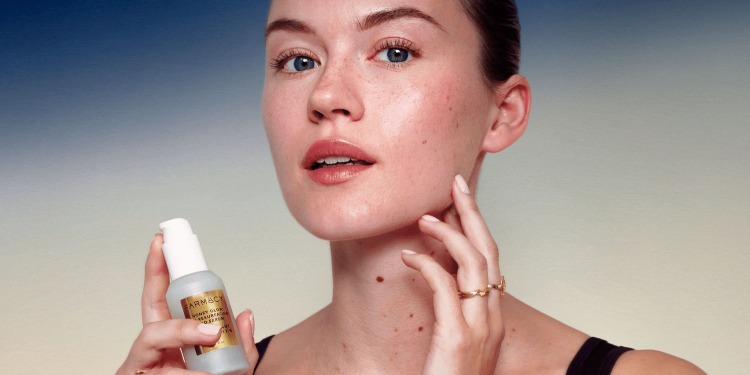In the quest for flawless skin, the discovery and use of resurfacing serums have marked a turning point in skincare routines. These potent formulas, designed to rejuvenate the skin by promoting cell turnover and diminishing the appearance of fine lines, acne scars, and hyperpigmentation, have become a staple in the beauty arsenals of those looking to achieve a radiant complexion. However, unlocking the full potential of these serums requires more than just application; it demands an understanding of their ingredients, benefits, and synergies with other skincare products.
In this comprehensive guide, we’ll delve into the “10 Secrets to Unlocking the Power of Resurfacing Serum,” ensuring you can harness its benefits fully. From selecting the right serum for your skin type to mastering the application technique, we’ll cover everything you need to elevate your skincare routine to new heights.
Table of Contents
1. Understand Your Skin Type
Before integrating a resurfacing serum into your regimen, it’s crucial to understand your skin type. Whether you have dry, oily, combination, or sensitive skin, there’s a serum formulated to address your specific needs. By choosing a product that aligns with your skin type, you can avoid potential irritation and maximize the serum’s effectiveness.
2. The Right Ingredients Matter
Look for key active ingredients known for their resurfacing properties, such as glycolic acid, lactic acid, and retinol. These components work to exfoliate the skin, removing dead cells and promoting the emergence of new, healthy skin.
3. Incorporate into Your Evening Routine
For optimal results, incorporate the resurfacing serum into your evening skincare routine. Nighttime application allows the active ingredients to work in tandem with your skin’s natural repair process, which is most active while you sleep. Experience the transformative effects of a quality resurfacing serum and witness how it can elevate your skin’s texture and tone.
4. Sun Protection Is Non-Negotiable
Using a resurfacing serum can make your skin more sensitive to the sun. Therefore, applying a broad-spectrum SPF of at least 30 during the day is essential to protect your newly exposed skin from harmful UV rays and prevent premature aging.
5. Patience and Consistency Are Key
Significant improvements in skin texture and clarity don’t happen overnight. Consistent use of the serum, as directed, is crucial for achieving the best results. Be patient, as it may take several weeks to notice visible changes.
6. Combine With a Moisturizer
After applying the serum, follow up with a hydrating moisturizer to lock in moisture and protect the skin barrier. This step is especially important for those using serums with ingredients that may initially dry out the skin, like retinol.
7. Start Slowly
If you’re new to resurfacing serums, start by applying the product once or twice a week and gradually increase the frequency. This approach allows your skin to adjust to the potent ingredients without irritating.
8. Listen to Your Skin
Pay attention to how your skin reacts after applying the serum. If you experience redness, burning, or peeling, it may be a sign that the product is too strong for your skin, or you’re using it too frequently. Adjust your usage accordingly.
9. Don’t Forget to Exfoliate
While resurfacing serums contain exfoliating properties, incorporating a physical or chemical exfoliant into your routine once a week can enhance the serum’s effectiveness. However, avoid over-exfoliating to prevent skin irritation.
10. Layer Wisely
When layering skincare products, always apply the resurfacing serum after cleansing and toning but before heavier products like moisturizers and oils. This order ensures the serum’s active ingredients can penetrate the skin effectively.
FAQs
- Can I use a resurfacing serum every day?
It depends on your skin’s tolerance. Start with less frequent applications and gradually increase as your skin adjusts. Daily use is possible for some but listen to your skin’s needs.
- Is it normal to experience tingling when using a resurfacing serum?
A mild tingling sensation can be normal due to the active ingredients. However, if the sensation is uncomfortable or accompanied by redness and irritation, reduce frequency or consult a dermatologist.
- Can resurfacing serums be used with other active ingredients?
Caution is advised when mixing active ingredients. Avoid using resurfacing serums with other potent actives like vitamin C or benzoyl peroxide at the same time to prevent irritation.
- How long does it take to see results from using a resurfacing serum?
While individual results vary, many people notice improvements in skin texture and tone within 4 to 6 weeks of consistent use.
Conclusion
In conclusion, unlocking the full potential of resurfacing serum is an art that requires knowledge, patience, and consistency. By understanding your skin type, choosing the right ingredients, and integrating the serum into your skincare routine thoughtfully, you can dramatically enhance your skin’s texture, tone, and overall health. Remember, the effectiveness of a resurfacing serum is not just in its application but also in how well you protect and nourish your skin afterward.
With the secrets revealed in this guide, you’re now equipped to harness the transformative power of resurfacing serums, paving the way for a radiant, youthful complexion that glows from within. Embrace these insights, and watch as your skin begins to reflect the care and attention you’ve invested.


 Home
Home










